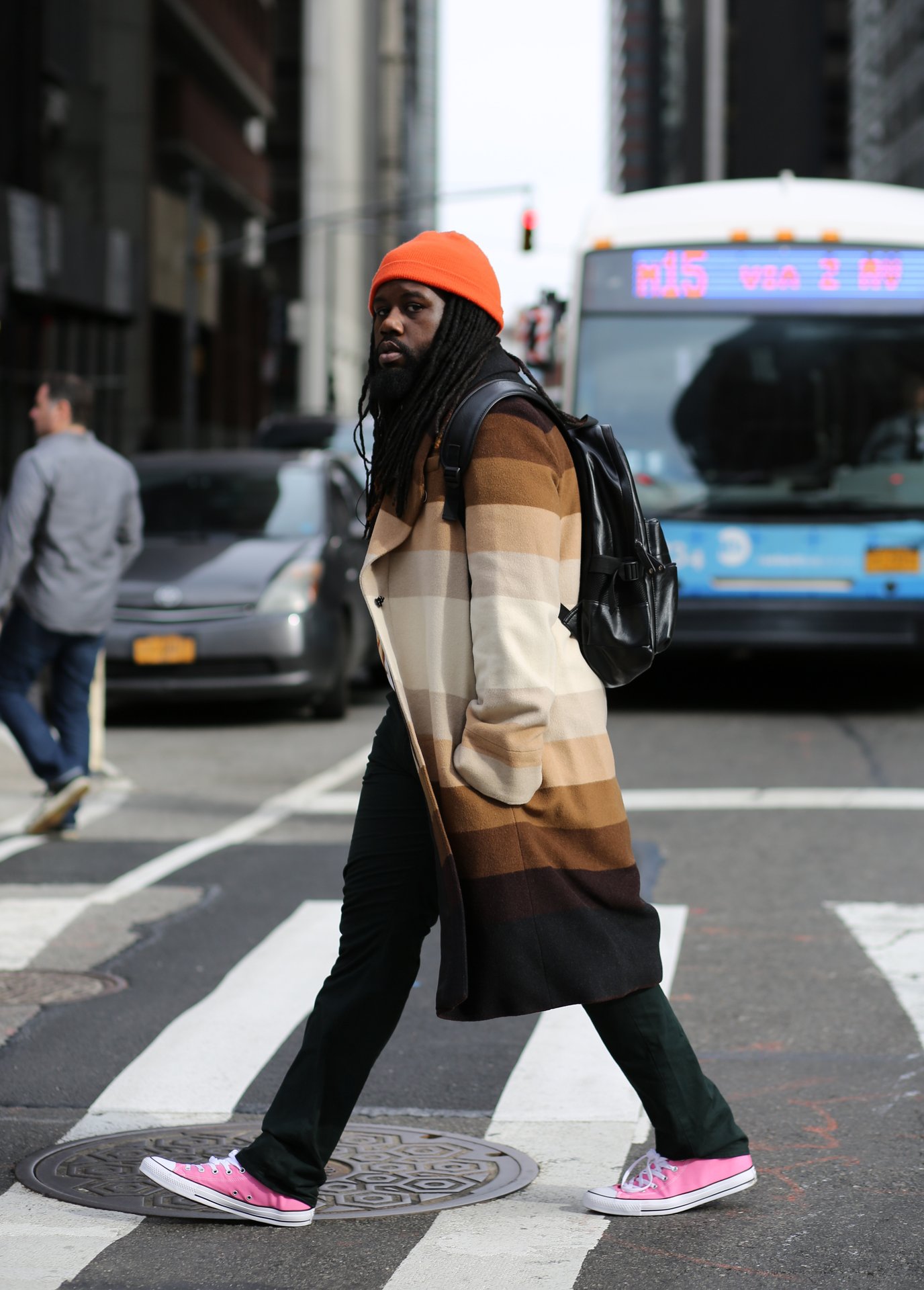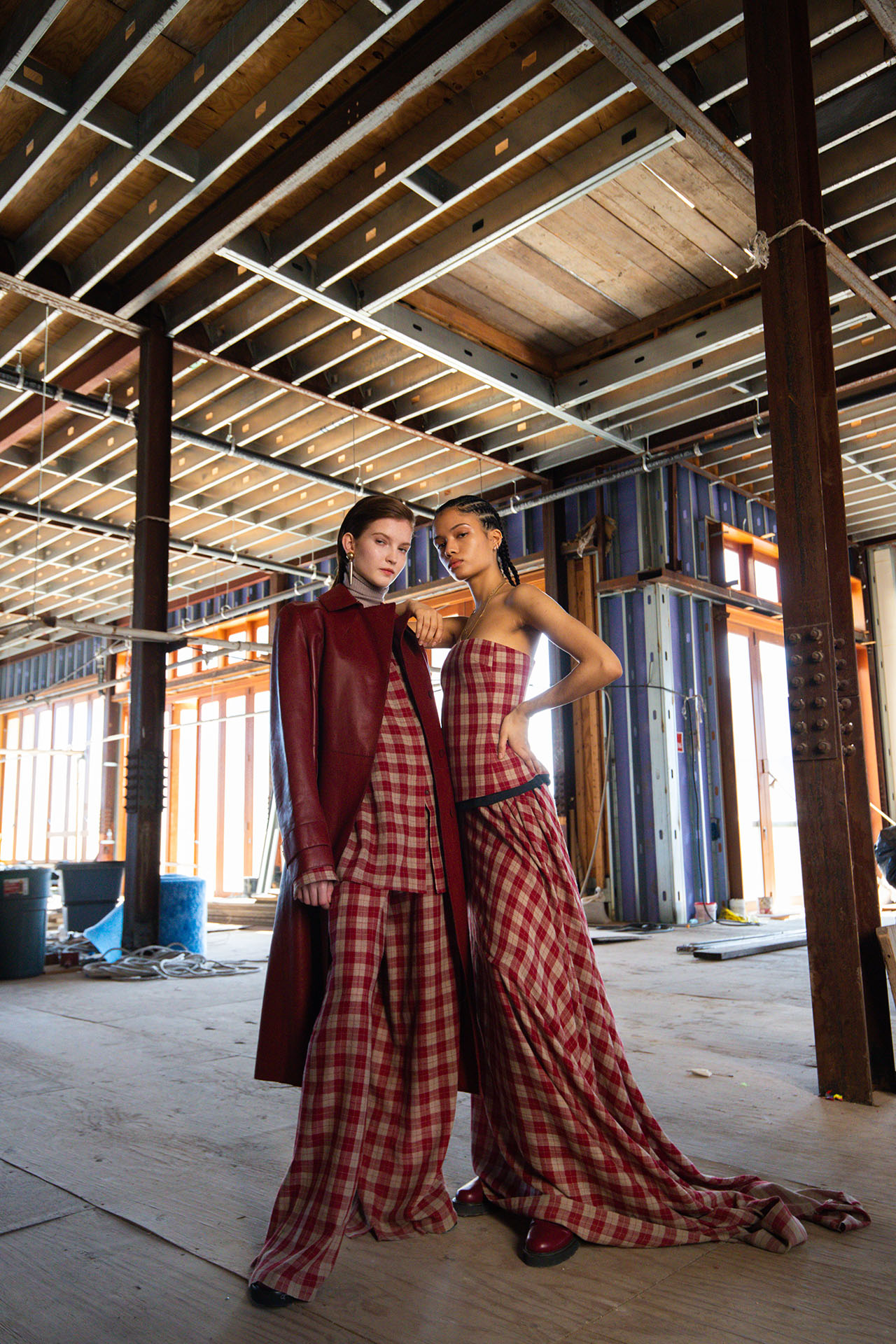Nigel Isaiah: The Kolor Magazine Founder on Creating his Own Black Publication
March 18, 2021
Rashad Benton


Buffalo – six hours outside of New York City – is the birthplace of Kolor Magazine’s Founder Nigel Isaiah. Like many others before him – think Kanye West – he’s a college dropout after a term at the University of Buffalo via the Upward Bound Program and a semester at Erie Community College. “I wasn’t interested in those schools. I was dead set on attending an HBCU. I got into both Morgan and Virginia State Universities, but neither offered me a scholarship.” After not receiving the proper financials to pay for school at either of those colleges, he saw a different path for himself – fashion. Though he had numerous interests – i.e. law, architecture, psychology, engineering –his knack for writing inspired him to make a career of it. At age 19, his first article was published, for Marie Denee’s “The Curvy Fashionista.”
Isaiah’s defining moment came while working retail at H&M in Buffalo. A coworker, Allison, had interned at Teen Vogue, and the conversations with her inspired him. “She’s the person who really introduced me to this world,” he recalled, “and it was that interaction with her that led me here.”
Fashion just clicked. “I would call out of work during NYFW to sit at home and live tweet,” he said. “I was so dedicated to live-tweeting about the collections people thought I was actually in NYC attending.” By 2014, he decided to move to the city that he would eventually fly back and forth from during the New York Fashion Week seasons. Lucky for him, his live coverage of the shows back in Buffalo helped him build a network of blogger friends that he fostered friendships with when he finally arrived in Harlem, and it helped him move into the fashion space as a freelance writer for Wonderland, HelloBeautiful, and Bullet magazines. $500, and 5 ½ years after the fact, he introduced the world to Kolor Magazine, and now he gets to tell his story.
Why Fashion?
I’ve been around it all of my life, and it’s a bit of my family’s influence. My mother taught herself how to sew, and I remember watching her create garments for my siblings and me when we were growing up. My mom would also always discuss how fly and well-dressed my dad was back when they first met. Then there’s my godfather, this superfly giant, so fashion was always there for me. Back in the day, I would get the EastBay magazines in the mail, and though I or anyone I knew never ordered anything out of them, I would spend time cutting out the tiny product shots using them to create outfits. As a kid, and you know just as well as I do, it’s a part of our culture, the Black culture, to be fly and fresh in school, so that’s why fashion.
What challenges have you faced since relocating from Buffalo to NYC related to getting into the industry?
The greatest challenge I’ve confronted attempting to break into the business is the opportunity. Everyone is looking for their break and the moment that gets them their first fashion job or first paycheck. I was surely searching for mine, and truthfully, I still am. How do I get my foot in the door, how do I meet people, and how do I get involved? Those were questions I continually asked and still ask myself. You have to work to get this stuff done and even be remotely recognized; it’s not easy.
Before you created your own publication, what were you looking to do?
I wanted to work at a magazine. Glamour, Vogue, GQ! It didn’t make any difference which one it was; I simply wanted to be at a magazine and ideally move gradually up to an Editor.
I interviewed with several publishing companies, and it just never worked out. One day, I was on my way home from my 9-5, and I remember hearing God say, "Put a project out," and I did.
Tell me about one of your toughest moments in the industry and how you prevailed.
Laughs! The hardest thing, and at the present time, right now, I’m talking about Kolor. It’s the place where I’ve confronted the most issues as I started from square one with Kolor. I had to rebuild relationships as I wasn’t reaching out on behalf of Wonderland or Bullet but for my own project and naively back then, I thought since I went to fashion week and had worked with many people in the industry, my life would just take off once I got into this. Luckily, I’ve never had to cancel a shoot because I couldn’t pull clothing, but it’s a difficult feat pulling my shoots together. I am very blessed to get the samples that I do, but it’s never too far away from my mind that I’m competing with every menswear publication out for samples; everyone from GQ to Fucking Young Spain is calling in looks from the designers, but I leave it to God to help me prevail.
Do you feel seen as a Black man in this industry?
I believe I am possibly en route to that. I see the ascent. There are so many Black male designers today, and they are paving the way for me. I kind of look to them since I don’t see myself a lot on the publishing side. After all, there aren’t many Black guys on fashion’s editorial side. Seeing more Black men in the showrooms provides a sense of comfort because you see your peers and they see you.
Kolor. Why that name? What drove you to set out on your own and start your own magazine, and why’d you focus on men?
The name Kolor came from me knowing I wanted something that when you read the name, it felt Black like Essence and Ebony. I ended up with color with a k. What drove me to start was that I couldn’t find a job anywhere, not an editor position and not even an assistant position. It’s sad, actually. I interviewed with several publishing companies, and it just never worked out. One day I was on my way home from my 9-5, and I remember hearing God say, “Put a project out,” and I did. Kolor originally started off as a unisex publication, and we kicked off with a round-up of the 25 most stylish Black Women in fashion followed by the 25 Most Stylish Black Men. I was inspired by VIBE magazine and the work of Emil Wilbekin and Memsor Kamarake. I chose to focus exclusively on men because it was easier. From the accommodations to the clothing, it was an easier process with an open lane. When the round-up of the 25 Most Stylish Black Men released, it did extremely well, and after seeing those numbers, that’s when I knew there was an audience there.
What has been your greatest achievement so far?
This interview! You dream about moments like this. Anyone who knows me knows I am a champion for American designers, fashion, and sportswear. Launching my own magazine and the fact that my samples say my name and Kolor Magazine on the bags when I go pick them up. This is all me! I’m not relying on and no disrespect, but I’m not relying on GQ or Vogue’s name to get samples. When I send my media kit out, it’s all me because I’m the one creating Kolor and producing the concepts and stories for the magazine.
What is your ultimate career goal?
My career goal will always be to become a Fashion Editor though I’m not so hung up on only working at the big names anymore. I want Kolor to make money. I still wouldn’t mind working at the Conde’s and Hearst’s of the world, but I’m not only focused on that because I want to do it all.
Do you have any advice for those looking to move to New York City to chase fashion?
Yes, and I have to say you can’t be salty about free work. We’ve all done it. We’ve all written for someone for free, and we were just happy to have the clips. One of the easiest ways in this industry is to do free work. It may not pay your bills, but do you really want to do this or not. Interning is pretty much dead, but when it comes back around again, do it and get that experience. If you get to NYC and can’t find that fashion job you were dreaming of, start your own thing. Maybe it’s a blog, or reach out to PR people and see if you can work with them. Don’t sit on your talents!
What are your thoughts on all the pledges made about Black inclusiveness from the industry last year, and do you feel change is happening?
The pledges are cool. I suppose it’s nice people can acknowledge that they’ve done wrong in the past and want to move forward differently. My response to that, though, is where’s the action now that you’ve made this statement, and are you going to move on from using the same five Black fashion editors that most of us know? Are you reaching out to new content creators? It’s definitely easier for Black designers to break in now, but what about those on the publishing side or business end who aren’t designers? I think it’s gotten a lot easier for Black women than Black men in the industry, and maybe that’s based on the fact that the womenswear and beauty industry is bigger than the men’s side. It seems to be more opportunity for them right now, and rightfully so.
Since you started your own Black magazine, what are your thoughts on our mainstream counterparts? Ebony & Essence?
I couldn’t be creating or doing anything with Kolor in any capacity if there was never an Ebony Man for a little bit. I couldn’t have been doing this if it wasn’t a COLE Magazine or a Bleu Magazine. We have to reelevate our Ebony and Essence to their glory days, and that is the responsibility of the Black community. There’s a load of top-tier Black editors and directors who work at the notable publications who got their start at Ebony and Essence, and we need those people to pour back into our magazines. I know it’s hard because Black magazines have a harder time pulling clothing and getting the a-list celebrities nowadays.
Is there any ancestor of ours you wish you could’ve met and why?
I wish I could’ve met Fashion designer Willi Smith. There’s this quote from him that goes, “I don’t design clothes for the queen but the people who wave at her as she goes by,” and that has stuck with me since I’ve heard it. I always remind myself of that quote when the big European brands decline me for samples. I take a step back and think to myself, “What am I trying to create with these editorials?” And that is fashion that looks like life in Harlem when I’m walking down the street seeing the Black guys in their Kappa sweatsuits and Moncler jackets. That perfect mix of athleisure and high fashion. It’s not just about having full European, and Michael Kors looks. It’s about how you dress, how the Black men in NYC dress, and how they dress in Buffalo.
Lastly, are there any Black Creatives known or unknown that you would like to bring to the CFDA’s attention?
Definitely, and I want to show love to Pause Magazine in the UK, Neu Neu Magazine by Alexis, Steele by Monroe Steele “That’s My Homegirl,” Subculture Magazine by Mikayla Davis, Milq Magazine by Shelemiah Nelson, and The Bear Scouts by Dio Kurazawa.
Website: KolorMagazine.com
IG (personal): @Nigel_Isaiah
IG (magazine): @Kolormagazine
PHOTO BY ZACH CHASE

